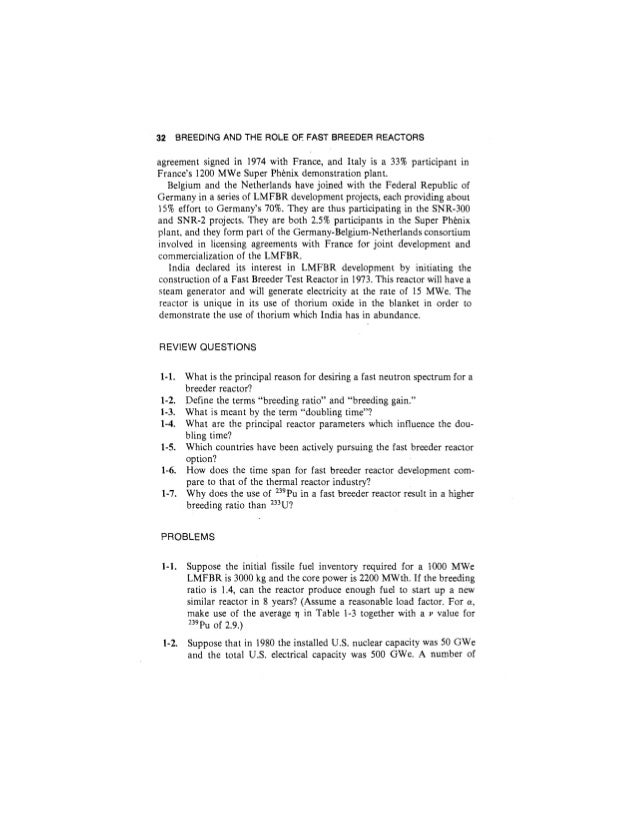Nuclear Reactor Dynamics Pdf Printer
Posted : adminOn 9/10/2018Terms offered: Spring 2018, Spring 2017, Spring 2016 The class provides students with an overview of the contemporary nuclear energy technology with emphasis on nuclear fission as an energy source. Starting with the basic physics of the nuclear fission process, the class includes discussions on reactor control, thermal hydraulics, fuel production, and spent fuel management for various types of reactors in use around the world as well as analysis of safety and other nuclear-related issues. This class is intended for sophomore NE students, but is also open to transfer students and students from other majors. Terms offered: Spring 2016, Spring 2015, Spring 2013 Laboratory course in nuclear physics. Experiments will allow students to directly observe phenomena discussed in Nuclear Engineering 101. These experiments will give students exposure to (1) electronics, (2) alpha, beta, gamma radiation detectors, (3) radioactive sources, and (4) experimental methods relevant for all aspects of nuclear science.
Experiments include: Rutherford scattering, x-ray fluorescence, muon lifetime, gamma-gamma angular correlations, Mossbauer effect, and radon measurements. Terms offered: Spring 2018, Spring 2017, Spring 2016 Use of nuclear measurement techniques to detect clandestine movement and/or possession of nuclear materials by third parties. Nuclear detection, forensics, signatures, and active and passive interrogation methodologies will be explored. Techniques currently deployed for arms control and treaty verification will be discussed. Emphasis will be placed on common elements of detection technology from the viewpoint of resolution of threat signatures from false positives due to naturally occurring radioactive material. Topics include passive and active neutron signals, gamma ray detection, fission neutron multiplicity, and U and Pu isotopic identification and age determination. Terms offered: Spring 2018, Spring 2017, Spring 2016 Computational methods used to analyze radiation transport described by various differential, integral, and integro-differential equations.
NUCLEAR REACTOR TYPES Many different reactor systems have been proposed and some of these have been developed to prototype and commercial scale.
Numerical methods include finite difference, finite elements, discrete ordinates, and Monte Carlo. Examples from neutron and photon transport; numerical solutions of neutron/photon diffusion and transport equations. Monte Carlo simulations of photon and neutron transport. An overview of optimization techniques for solving the resulting discrete equations on vector and parallel computer systems. Objectives & Outcomes Course Objectives: The objective of this course is to acquaint Nuclear Engineering students with the concepts and practice of nuclear criticality safety, and to help prepare them for a future career in this field. Student Learning Outcomes: At the end of this course, students should be able to: Explain and define criticality safety factors for operations.

Discuss previous criticality accidents and their causal factors, including parameters involved in solution and metal critical accidents. Identify and discuss the application of several common hand calculation methods. Aplikasi Kasir Offline Php. Canon Scan Software For Windows 7 more. Describe the importance of validation of computer codes and how it is accomplished.
Discuss ANSI/ANS criticality safety regulations. Describe DOE regulations and practices in the nuclear criticality safety field. Complete a Criticality Safety Evaluation. Objectives & Outcomes Course Objectives: * Introduce students to the methods and models for event identification, accident analysis, and risk assessment and management for internally and externally initiated events. * Introduce students to the regulatory requirements for design, construction and operation of nuclear facilities licensed by the U. Download Game Guitar Hero Indonesia Untuk Hp Nokia C3. S. Nuclear Regulatory Commission. * Introduce students to the safety principles and methods used to design, construct and operate a safe nuclear facility, for a specific site and application.